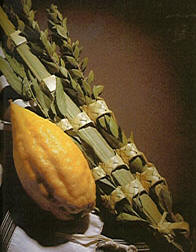Historical Importance
Five days after Yom Kippur, on the fifteenth day of the month of Tishrei, the festival of Sukkot begins. In English, the festival is known as the Feast of Tabernacles. According to an ancient tradition, Jews build a sukkah, which is a temporary shelter, and live in it for seven days and nights, celebrating with special ceremonies.
Definition and Biblical instructions
The term “sukkah” in the Hebrew lexicon means a temporary and unprotected hut or a booth made from branches and leaves, adhering to specific regulations. The Book of Leviticus, chapter 23, outlines God’s instructions for building a sukkah. This festival holds great significance for two main reasons.
Commemoration of the Exodus
Sukkot commemorates the exodus of the Israelites from Egypt and their forty years of wandering in the Sinai Desert, during which they were protected by the Divine clouds of glory like a shelter. By dwelling in a sukkah, Jews demonstrate that human refuge does not lie in the seemingly solid walls and roofs of houses but in the constant Divine protection, much like the Israelites experienced in the desert.
Agricultural celebration
Another reason that makes Sukkot an important celebration is that it is also an agricultural festival, because it marks the end of the harvest season. It symbolizes the Jews’ journey to Jerusalem to celebrate Sukkot and offer prayers of gratitude for the bountiful blessings bestowed by God. This festival is known as one of the joyous Jewish holidays, the Shalosh Regalim (שלש רגלים; Three Pilgrimage Festivals).
Observance and duration
As instructed in Leviticus, chapter 23, Jews are to cease work on the first and eighth days, treating them like Shabbat. They are also commanded to “enjoy your festival”. If we include Shemini Atzeret and Simchat Torah, the festival of Sukkot lasts nine days.

Symbols and Rituals of Sukkot
Lulav and etrog: the four species
Among the symbols used in the Sukkot festival are the lulav and etrog (citron and palm branches). A bracha (prayer) is recited while holding these four plant species.
Construction and components of the lulav
The construction of the lulav, as commanded in the Torah in Leviticus, chapter 23, follows specific guidelines. A palm branch is bound together with three myrtle branches and two willow branches. Then, the etrog is held in the hand while reciting the bracha גל נטילת לילב.
Symbolic meaning
Lulav and etrog are known as the four plant species (Hebrew: ארבע מינים), each having their own characteristics and philosophical interpretations:
- Etrog (Citron): This is a fragrant and edible fruit; it symbolizes those who are knowledgeable and act upon their knowledge as well.
- Palm Branch: The date fruit is edible but not fragrant; it represents those who are unlearned but active.
- Myrtle: Fragrant but not edible; it symbolizes those who are knowledgeable but do not act.
- Willow: Neither fragrant nor edible; it represents those who neither possess knowledge nor act.
Philosophical Interpretations
There are other interpretations for the lulav and etrog as well. The etrog is likened to the heart, the willow to the lips, the myrtle to the eyes, and the palm branch to the spine. These interpretations suggest that humans often err through their emotions (heart), speak ill with their lips, observe sin with their eyes, and commit physical misdeeds with their spine, which enables physical activities.
Symbolic Movements and Prayers
By holding the lulav and etrog, we aim to remind ourselves to avoid wrongdoing. While reciting the Hallel prayer (הלל), we give thanks to God. During this prayer, the lulav and etrog are moved in six directions (north, south, east, west, up, and down), symbolizing our desire for Jews scattered around the world to give thanks and praise to God. We continually ask God to show mercy and compassion to people in all corners of the earth, to the deceased below, and to the spirits above.



 فارسی
فارسی